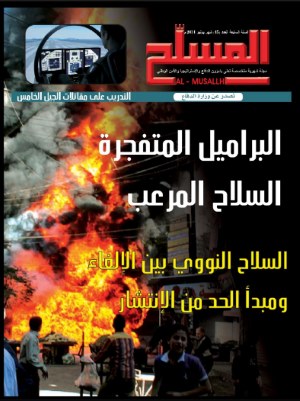During modern conflicts, wars, and asymmetric operations, new unconventional weapons have emerged. One of these is the concrete—or “cement”—bomb. It is also considered an application of precision-guided munitions
(Precision Guided Warfare). Conceptually it represents a shift from “scorched-earth destruction” to “surgical precision strikes.” Its strategic value lies in its ability to achieve precise tactical and operational effects in complex environments (such as urban areas) while producing politically and ethically acceptable—minimal—collateral damage.
Concrete bombs belong to the class of kinetic-energy weapons. They are inert aerial munitions that contain no conventional warhead and are not filled with explosives such as TNT or HMX. They rely entirely on kinetic energy gained during their fall toward the target and destroy targets through the tremendous impact force generated by the bomb’s mass and speed, producing a concentrated penetration/blunt-force effect.
Concept and design
The idea of concrete bombs has existed for decades; they were originally used for training. There is no distinctive external design—essentially they are aerial bodies (containers) such as JDAM family bodies or GBU-12 casings filled with a dense inert material like reinforced concrete (high-strength cement containing 95–100% clinker — the grey granular binding material used to make cement — plus secondary additives to strengthen it) or heavy metal materials instead of explosive filler. They are fitted with guidance suites (INS inertial navigation, GPS, laser guidance) to ensure high targeting accuracy and delivery of the strike. This ingenious method was pioneered and employed by the Americans and the French.
conflicts such as Libya, where the coalition’s international reputation and the consequences of collateral damage carry significant strategic and political weight.
When were concrete/cement bombs used for the first time?
The United States was among the first countries to use precision concrete bombs against Iraqi targets in the 1990s to reduce collateral damage and avoid killing civilians, striking highl
y sensitive civilian-adjacent targets during the enforcement of no-fly zones in Iraq under United Nations resolutions. Those bombs were essentially repurposed training rounds reused against real targets; they weighed 500, 1,000, or 2,000 pounds and did not detonate on impact like a conventional explosive—rather, they delivered their kinetic energy to the struck vehicle. That was sufficient to destroy even large vehicles such as tanks without harming people nearby.
These uses were often limited or covert operations and received little media coverage. The United States still uses concrete bombs in training and operational missions.
The first documented operational employment of this class of aerial bombs and their adoption as real combat munitions came from NATO forces—particularly France—during April 2011 in Operation Harmattan, the French contribution to NATO’s “Unified Protector.” French aircraft began conducting airstrikes using 300-kg guided concrete bombs instead of explosive warheads against Libyan tanks, vehicles, and troops from thousands of feet, with the ability to disable a heavy tank without producing a large explosive fragmentation event that could kill many bystanders.

Thus, in absolute destructive power a concrete bomb is much weaker than a conventional explosive bomb, but operationally and politically it can be far more effective. Their use requires strict rules of engagement. Because they rely on kinetic energy, their destructive effect depends on three main factors:
- Direct kill and incapacitation: The bomb destroys the target by penetration and crushing. When dropped from high altitude it attains very high terminal velocities (potentially supersonic), allowing it to penetrate the roof or hull of an armored vehicle and pulverize its contents and ammunition.
- Localized destruction and disabling: Although there is no conventional explosion, damage is highly localized at the impact point and immediately around it, effectively neutralizing the target.
- Low collateral damage: The absence of a conventional blast and fragmentation greatly reduces civilian casualties in the vicinity of the target because the effect is narrowly focused—this is its most important advantage.
Operational use of concrete bombs
The operational use of concrete bombs derives from a modern Western military doctrine—prominently among NATO states—of “reducing collateral damage.” This is not a general theory of war so much as a force-employment philosophy that integrates military, legal, and political constraints. Its primary aim is to destroy military objectives (vehicles, tanks, artillery) while minimizing harm to civilians and civilian property protected under international humanitarian law.
Inert (concrete) bombs are ideal tools for implementing that doctrine: they combine precision guidance with localized kinetic destructive power, removing the risk of a large explosion and wide-ranging fragmentation and thereby lowering the chance that a lawful strike becomes a war crime, humanitarian disaster, or political crisis.
Their use is also governed by rules of engagement (ROE), which set conditions and constraints on employing force. ROE allowed coalition forces during the Libya campaign to use concrete bombs under two core conditions grounded in international humanitarian law: military necessity (the target must have distinct military value and its destruction must yield a clear military advantage) and proportionality (the expected military advantage must outweigh expected civilian harm and collateral damage). Because the UN mandate for Libya was ostensibly “to protect civilians” (despite instances where practice diverged), concrete bombs allowed fighter pilots to meet proportionality in highly sensitive scenarios (for example, striking an artillery piece or launcher situated between residential buildings) where ROE would preclude using an explosive warhead.
Operational effectiveness of concrete bombs
The formal and repeated use of concrete bombs in the 2011 Libya campaign placed them in the spotlight as a principal tool for minimizing collateral and civilian casualties under NATO’s applied collateral-damage-reduction doctrine in high-accountability conflicts. Their operational impact on live targets in Libya proved highly effective for specific tactical objectives, making them a key element of NATO’s “cautious engagement” concept in that conflict.
Because their effectiveness depends entirely on guidance accuracy, a miss of even a few meters renders a concrete bomb far less destructive compared with an explosive bomb. This dependency led NATO to be meticulous in selecting targets for these munitions: rather than canceling a strike on an anti-air gun or rocket launcher placed adjacent to a hospital or school, a concrete bomb could be used to precisely destroy the military target while significantly reducing the risk to nearby civilian facilities or persons.
During the campaign, high-value urban targets were struck with concrete bombs—one notable hit was the Administrative Control Authority building in Tripoli. Observers noted dense clouds and dust from pulverized concrete surrounding the structure while the building itself did not suffer total collapse. Concrete bombs also hit concentration points for military vehicles and units in Zliten and other areas: the bomb penetrates the roof of a military vehicle (truck or light armored personnel carrier) at high speed, destroying and disabling it and inflicting fatal or injurious blunt-force trauma to its crew without causing a secondary explosion.
A French army spokesman at the time said the purpose of using these munitions was to exploit the impact effect while limiting collateral risk, noting they produce very precise strikes with very little fragmentation. Their first reported use to disable armored vehicles occurred on 26 April 2011; France framed the employment as evidence of its commitment to the highest standards of precision to reduce civilian casualties in a UN-monitored international conflict. It is likely the United States also used or at least provided the technology and supplied command, control, and intelligence systems for the operation.
Containers for concrete bombs (MK / GBU)
Concrete bombs use MK bomb bodies or GBU containers. Standard bomb bodies such as the MK-82 (500-lb) or MK-83 (1,000-lb) are often used and fitted with GBU guidance kits (e.g., GBU-10/12/49). The only difference is that the casing is filled with concrete instead of explosive filler.
Many countries use training rounds with weights similar to live munitions and then add an actual guidance kit to employ them operationally—this is what France did in Libya using 300-kg training rounds. Small-diameter bombs are also used as inert guided kinetic munitions to disable targets with extreme precision without any significant blast.
The basic technology for concrete bombs is theoretically available to any state—filling a bomb casing with concrete is simple—yet striking a moving vehicle’s roof with precision requires advanced, controllable guidance systems (GPS/INS or laser) that many states lack. That technological barrier limits availability to militaries possessing precision guidance technology such as the United States, France, the United Kingdom, Russia, and China—states capable of producing and employing these munitions with operational effectiveness.
|
Criterion |
Concrete (cement) bombs (inert) |
Conventional (explosive) bombs |
|
Mechanism of destruction |
High kinetic energy and penetration |
Chemical energy, explosion, blast wave, fragmentation |
|
Destructive power |
Very localized; crushes target directly |
Wide-area; destroys structures around impact point |
|
Risk of collateral damage |
Very low; no explosion or fragmentation |
Very high; large blast and fragmentation |
|
Optimal targets |
Vehicles, mobile artillery, small command posts |
Hardened command centers, ammunition depots, military massing |
|
Effect |
Penetrates roof/floor and destroys what is beneath without collapsing the building |
Structural destruction of buildings or facilities |
|
Operational success |
Effectively neutralizes military target without creating a civilian “halo” of destruction |
Total destruction of the target |











 English
English  العربية
العربية 








